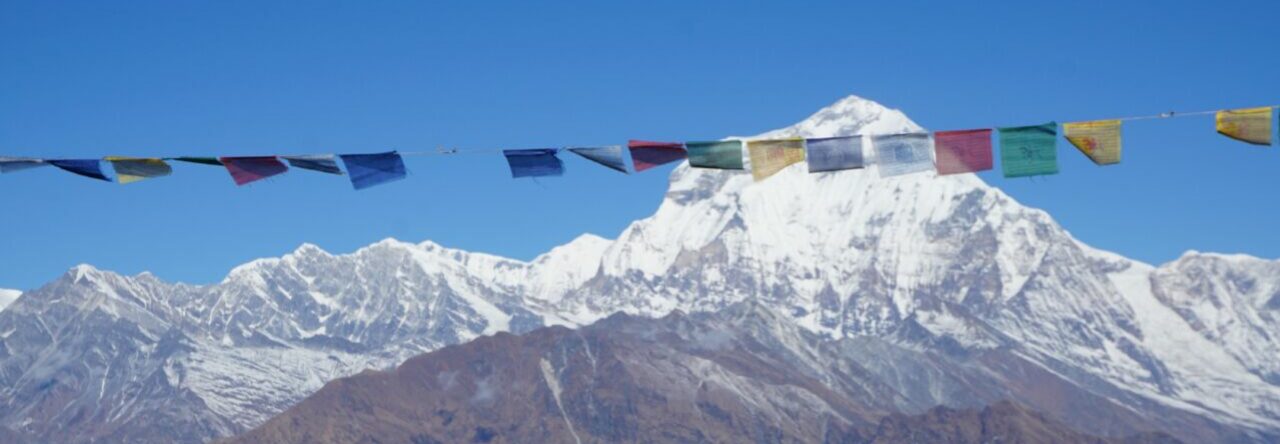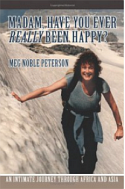July 7, 2017
“WHAT A WONDERFUL FEELING, WE’RE LOOKING FOR A ROAD.” (sung to the tune of Singin’ In The Rain). Yes, a good part of my journey through the heart of Mongolia last July was spent in a Russian van bumping over open countryside, maneuvering between giant rocks, down gullies, and through rivers, in search of the semblance of a road that would take us to sparkling lakes, undulating mountains, exquisite rock formations, and wilderness campsites. Sometimes I felt the van tilt so far that I was sure we would overturn, but our driver, Algaa, whom I nicknamed George, because I could never say his name with the correct inflection, was better than any race driver I had ever seen gracing the tracks of the Nurburgring or Indianapolis. It defined adventure and made me realize how often I employed my New Yorkese as I hung on and yelled, “Oiy Vay! I can’t believe this!” It was truly a thrill a minute.
Click on the photos to start slide show.

In all fairness, there is a super highway, but all the scenic places are off road…and it’s more fun, anyway!
 Last July 3rd, just before I flew to Ulaanbaator, I wrote a bit about the history of modern Mongolia and about our outstanding guide, Bolormunkh Erdenekhuu (Bogie). Click HERE to read it. Bogie is an ornithologist, geologist, and engineer all wrapped into one, with an extensive knowledge of the wild life and history of his country. Like about 98% of the populace, he is well educated and aware of the problems facing the world today. He berated the West for its complacency about and complicity in global warming and for its lack of awareness of climate change. And he despaired of what it was doing to the culture and economy of his country. Animals are dying, grasslands are drying up, and nomads are moving to Ulaanbaatar, the capitol, in an attempt to make a living…stretching its facilities to the breaking point. I totally agreed with him, and shared my despair about how the current administration was pulling out of the Paris Climate Change Accord, and also allowing for more emissions from coal plants. I was helpless to explain this craziness and lack of foresight and was heartsick when I saw the condition of the formerly fertile hills and valleys of this nomad culture. Later on in my story I will show you how we got stuck in a sandstorm in the Great Mongolian sand dunes (or upper Gobi) and had to shovel our way out. And we weren’t the only ones!
Last July 3rd, just before I flew to Ulaanbaator, I wrote a bit about the history of modern Mongolia and about our outstanding guide, Bolormunkh Erdenekhuu (Bogie). Click HERE to read it. Bogie is an ornithologist, geologist, and engineer all wrapped into one, with an extensive knowledge of the wild life and history of his country. Like about 98% of the populace, he is well educated and aware of the problems facing the world today. He berated the West for its complacency about and complicity in global warming and for its lack of awareness of climate change. And he despaired of what it was doing to the culture and economy of his country. Animals are dying, grasslands are drying up, and nomads are moving to Ulaanbaatar, the capitol, in an attempt to make a living…stretching its facilities to the breaking point. I totally agreed with him, and shared my despair about how the current administration was pulling out of the Paris Climate Change Accord, and also allowing for more emissions from coal plants. I was helpless to explain this craziness and lack of foresight and was heartsick when I saw the condition of the formerly fertile hills and valleys of this nomad culture. Later on in my story I will show you how we got stuck in a sandstorm in the Great Mongolian sand dunes (or upper Gobi) and had to shovel our way out. And we weren’t the only ones!
Our story starts from the picturesque and bustling capital, Ulaanbaatar, on July 4th. Bogie arrived at our rented room on his bike and he, Tamara, and I headed for the main market located in the huge government department store to buy supplies for our trip. Tamara, you may remember, is my friend from Maine, whom I call a “traveling librarian.” At the store we met Tulle, Bogie’s charming wife, who was going to accompany us on the trip along with their adorable four-year old son, Ankush, a live wire, indeed, who was with us the first two days.
On July 8th we started on an adventure that would take us 4,750 kilometers overland through the Noyon Khangai and Altai mountains, Olgii, the Altai Bogd National Park and its lakes, the Kharkhiraa and Turgen mountain area, Achit, Unreg, and Hyargas Lakes, and the Great Mongolian sand dunes. Most of our first day was spent on a paved road, so we had no idea what lay in store for us! After we went off road, we passed numerous small lakes and marshes. The animals that stood in them and the low-lying white puffy clouds were perfectly reflected, doubling our visual pleasure. We were on the steppes with all kinds of grasses—from flowering forbs to feather grass, from spiny clusters to drought-resistant varieties with long Latin names. But there was still a great deal of sand with ripples, not from water, but from the wind.
It was a picture book scene: craggy outcroppings, black rocks, rolling hills, and an occasional cluster of two or three gers surrounded by roaming sheep, goats, and cows. A ger is a form of yurt. The roof is made of straight poles attached to the circular crown.
We camped not far from a nomad family, and it was quite the process each evening to set up.
As we were setting up, two children came by on a camel, offering rides. If I had known that this was my best chance, I’d have hopped aboard. Instead I decided to explore the sand dunes and swamps, which were rife with baby frogs and other tiny aquatic creatures.
We camped in part of the Khugnu-Tarna National Park. All around were small sand dunes and high grasses. In the distance were brown hills and lakes.
After dinner we walked to a sandy ledge where Bogie and his family had a grand time sliding down and trudging back up in bare feet.
As we stood there the moon came up and was in its full glory by the time we returned to camp. Sheep and goats roamed just outside our tents, as on most nights. It was cold and there were beads of frost on the grassy steppes at 5:30 in the morning when I peeked out at the sunrise. A clear white light silhouetted the hills. Reflections highlighted the marsh. Total silence.









































Jon M Pollack
I loved all the pictures. What a great trip!!!